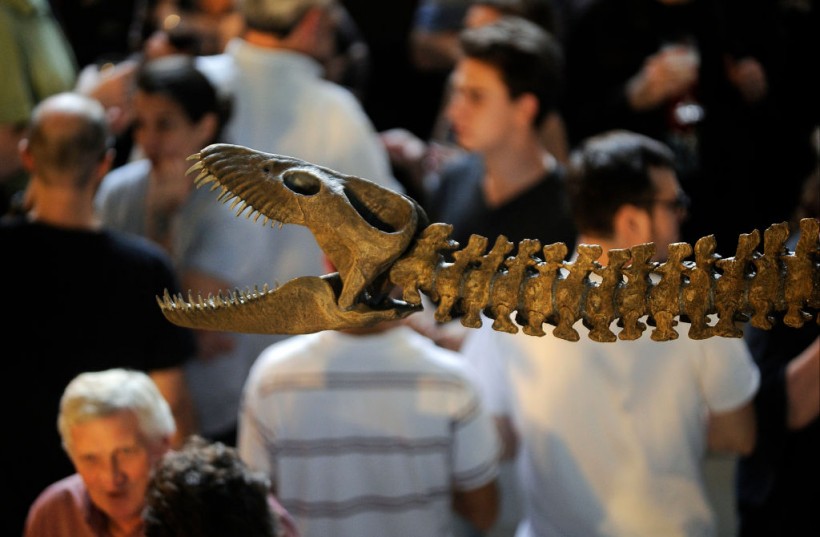A study recently showed that large bodies are helping overcome the extra drag produced by intense morphology, discrediting the long-standing notion that there is an optimal body shape for low drag.
As indicated in a EurekAlert! report, scientists at the University of Bristol have found that body size is more essential compared to body shape when it comes to determining the "energy economy of swimming for aquatic animals."
@twitter|https://twitter.com/physorg_com/status/1519692952276287490?ref_src=twsrc%5Etfw@
One essential finding of this study is that the extinct elasmosaurs did add excess drag, although the bodies' evolution compensated for this.
The four-limbed vertebrates, also known as tetrapods, have repeatedly gone back to the oceans over the past 250 million years, and they come in various sizes and shapes, ranging from streamlined modern whales more than 25 meters long to extinct plesiosaurs with four flippers and unusually long necks, and even the extinct fish-shaped ichthyosaurs.
ALSO READ: New Baby White Rhino Born at Disney's Animal Kingdom Theme Park

View of the skeleton of a giant plesiosaurus (Reptilia, Sauropterygia), an extinct marine reptile discovered in Cretaceous rocks near El Calafate, Santa Cruz province, Argentina, during its exhibition inauguration at the Natural Science Museum in Buenos Aires.
Dolphins and Ichthyosaurs with Similar Body Shapes
In the study published in Communications Biology, the authors specified that dolphins and ichthyosaurs have akin body shapes, adapted for moving rapidly through water that produces low resistance or drag.
Plesiosaurus, on the other hand, who lived along with the ichthyosaurs in the Mesozoic Era, had different bodies.
Their massive four flippers, which they were using to fly underwater and variable neck lengths, have no resemblance to living animals.
Several elasmosaurs had drastic proportions, next up to 20 feet in length. Such necks likely helped them snap up fast-moving fish, although they were also believed to make them slower.
It has not been clear how size and shape affected the energy demands of swimming in such diverse marine animals until the present.
Water Tank Experiments
Dr. Susana Gutarra Diaz, a paleobiologist from Bristol's School of Earth Science and the National History Museum of London who led the study, said, to test their hypotheses, they developed various 3D models and carried out computer flow simulations of plesiosaurs, cetaceans, and ichthyosaurs. These experiments are conducted on the computer, although they are like water tank experiments.
Dr. Colin Palmer, an engineer who's part of the project, said they showed that even though plesiosaurs did encounter more drag than ichthyosaurs or whales of equal mass due to their unique body shape, such differences were relatively minor.
Describing their work, Palmer discovered that when size is taken into account, the differences between groups turned out to be much less than the differences in shapes.
The researchers also showed that the body length's ratio to diameter, widely utilized to categorize these aquatic animals as more or less effective, "is not a good indicator of low drag."
Hypothetical 3D Models of Plesiosaurs
According to Dr. Gutarra Diaz, they were specifically interested in the necks of elasmosaurs, so they developed hypothetical 3D models of plesiosaurs with different lengths of necks.
Simulations of such models show that the neck is adding drag past certain points, which possibly would make swimming costly. Such an optimal neck limit lies around double the length of the animal's trunk, a similar ScienceDaily report said.
An expert on marine reptiles, Dr. Benjamin Moon, another collaborator in the study, elaborated that when they studied a large specimen of plesiosaurs modeled on really well-preserved fossils at their actual sizes, it turned out that most plesiosaurs had necks underneath this high-drag threshold.
Related information about extinct marine reptiles is shown on Classica Software YouTube's YouTube video below:
RELATED ARTICLE: Endangered Species: Scientists Warn 1 in 5 Reptiles Are at Risk of Extinction
Check out more news and information on Extinct Animals in Science Times.














